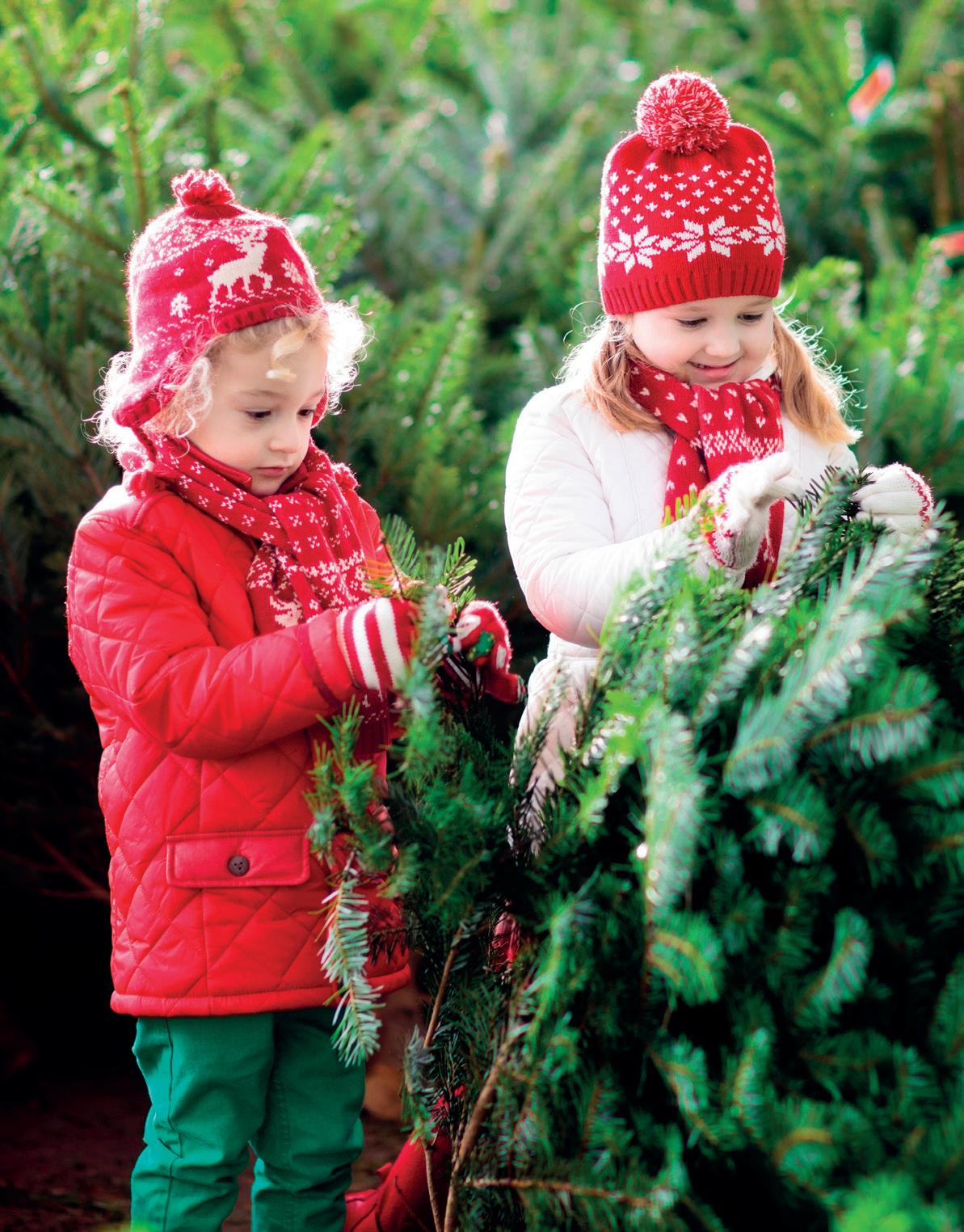
12 minute read
CHRISTMAS TREES Harvesting
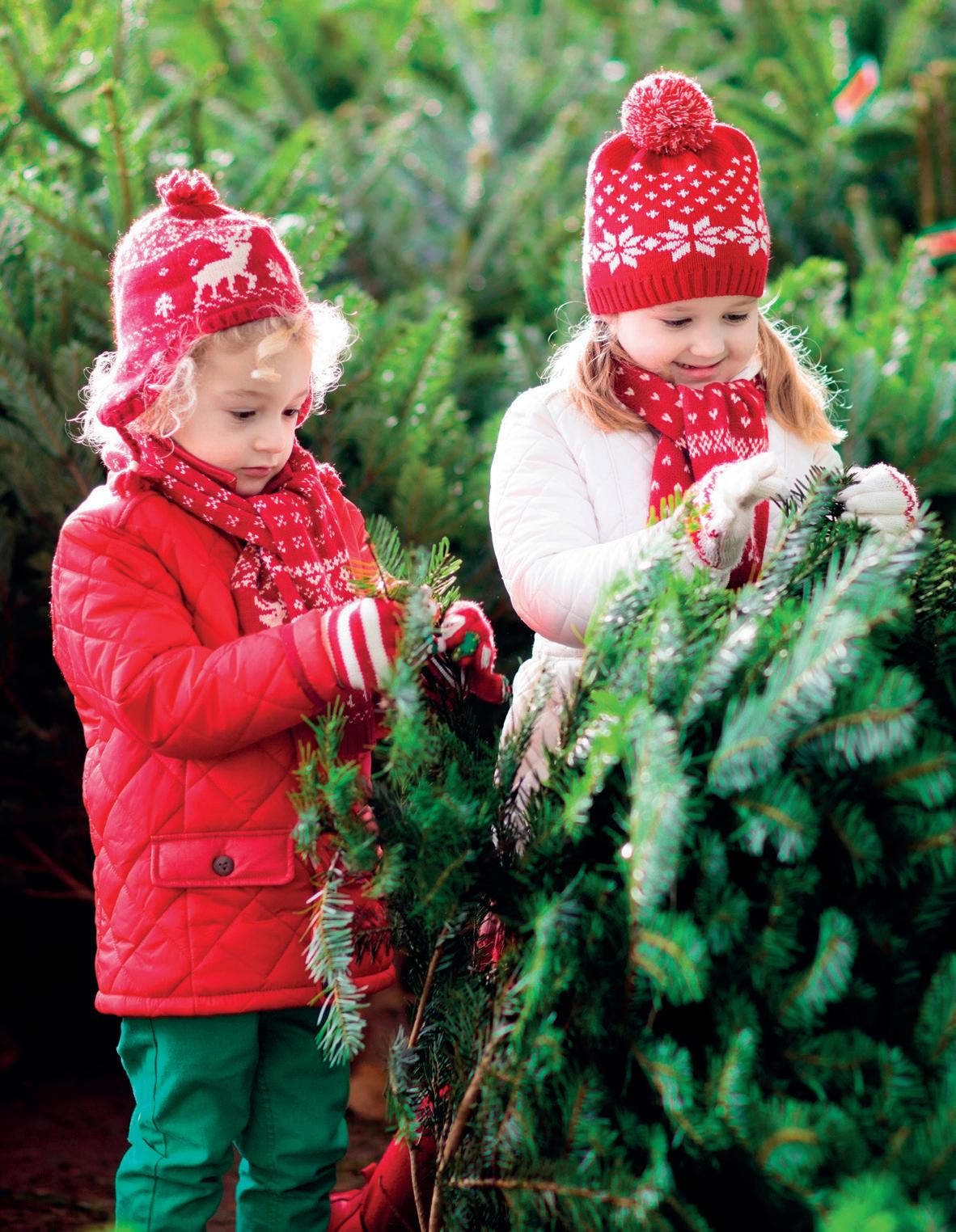
OH! CHRISTMAS TREE
Advertisement
Get ready for the festive ritual of choosing a fresh, beautifully scented tree to decorate your home... this month we meet Gill Miller and the family at North Luffenham’s Digby Farm, home to enough Christmas trees to supply a quarter of Rutland’s homes!
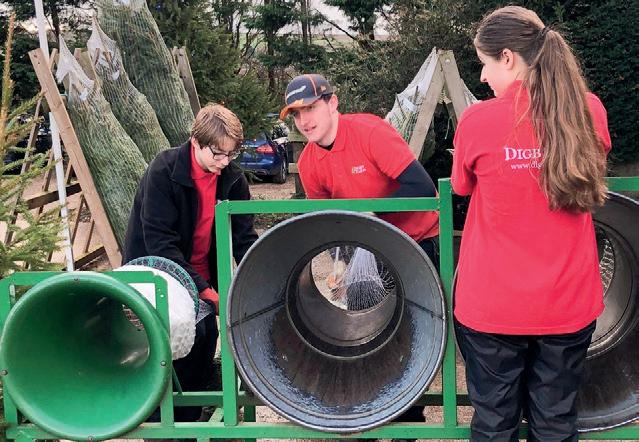
IF YOU WERE to raise a glass of something festive to Gill Miller and family in the run up to Christmas, we’d suggest a toast that goes something along the lines of ‘may next year bring plenty of rain, and far fewer rabbits.’ There are about 20,000 households in Rutland and as Digby Farm harvests about 5,000 trees, a year, that’s the equivalent of one each for a quarter of all homes in the county. Of course, it’s not quite that simple, because Digby Farm’s customers also visit the place from Stamford, Leicester, Peterborough and even further afield. Nevertheless, if you find yourself admiring a really beautiful tree somewhere in Rutland at some point over the festive season, there’s a good chance that if came from the North Luffenham Farm.
The family supplies Wicksteed Park and Nene Valley with their monster trees, and also the tree that appears in the Market Place of Uppingham during Fatstock. But by far the most popular trees aren’t those which grow to 23ft, they’re the 6ft ones which many Rutlanders take home, usually on the last weekend of November so they can put up and decorate their tree ready for 1st December... which means Gill and the family are about to be very busy indeed. >>
>> “The soil isn’t ideal here, so we have to work quite hard, but we’ve been producing Christmas trees for the area since 1991,” says Gill. “Christmas trees aren’t especially good for rotating with other arable crops, but we tend to leave a field fallow after we’ve harvested trees so that it can rest. Over the years, too, we’ve planted so many trees and incorporated back into the soil so much organic material, including tree roots from harvested trees, that the soil has become more acidic, which the trees love.”
“Rabbits are a pest, and we’d always like to have a bit more rain. This year has seen an exceptionally dry spring and summer which hasn’t been ideal.”
By far the biggest challenge of being a Christmas tree farm, beyond the obvious issue that your crop is only in demand once a year, is that trees take so long to grow... about a foot each year, in fact. So when you take your 6ft Christmas tree home, it’s probably eight years old, having been established for a couple of years before shooting skyward for six years or so. The farm covers over 150 acres with about half of it dedicated just to Christmas trees. “There’s no convenient or automatic way to irrigate the farm if we don’t get enough rain, so we’re at the mercy of nature a little in that respect, and neither is there an automated way to harvest them at this scale either. So it’s down to the team to venturing into the fields at this time of year with a chainsaw and a tractor & trailer to ensure we can keep the Christmas shop continually stocked with nice fresh trees.”
“We open to the public from about 25th November and it’s become a regular ritual for many people; the start of their festive season. They enjoy a walk through the fields, with a cup of coffee or a hot chocolate, and have a wander, just enjoying the scent of the trees and the fresh air.”
“Sometimes we’re asked to cut a specific tree for a customer but most of the time we’ve something of the right size and shape already cut. When we harvest we’re always selective, choosing trees which aren’t effected by pests and which have a nice healthy appearance and a good shape.” “The best way to make a tree last through to Christmas is to make sure it’s fresh. We’re cutting daily throughout the season so ours are really as good and as fresh as they get.” “Because the sap hasn’t sealed the base of our trees yet there’s no need to cut the bottoms off, just make sure they’re secured in a really good quality stand and given plenty of water.” “As for our family, we don’t tend to put our tree up until 24th December. We’re completely exhausted by that time as we’re all so busy right up to Christmas itself, but we’ll also be on a real high, knowing that we’ve helped to make so many people’s Christmas really special!” n

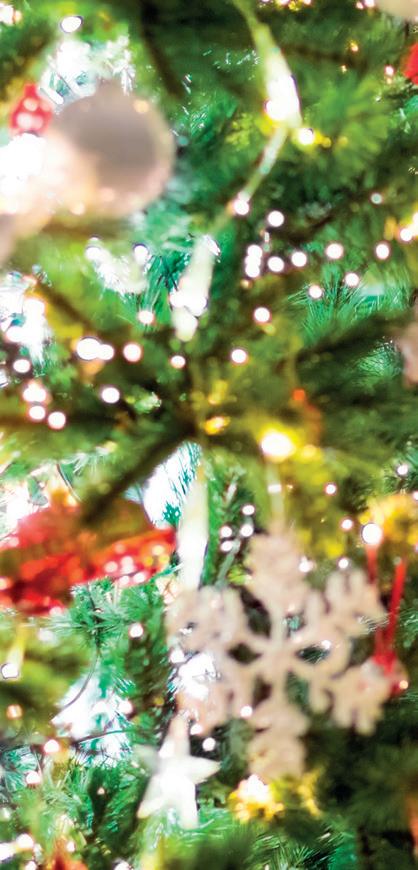
BRANCHING OUT: Exploring Different Tree Species...
NORWAY SPRUCE
Traditional, slightly spikier Christmas tree, with the freshest coniferous scent. Tends to have a really good shape, and broad, bushy base. Prone to needle-drop, so keep it in a cool place. n NORDMANN FIR
The Nordmann Fir has become one of the more popular varieties in recent years with softer needles and excellent needle retention. There’s much less scent but more tolerance to heat. Less green, with a more white/blue hue. n SCOTCH PINE
Much longer needles, with a wonderful scent and good needle retention. Ideal as larger trees as it’s quite bushy, and for those seeking a Christmas tree which may have pine cones growing on its branches. n
Find Out More: Digby Farm has been selling Christmas trees to the public for 30 years from their family Christmas tree farm and its Christmas shop, located in North Luffenham, LE15 8LF. Call 01780 678508 or see www.digbyfarm.co.uk.

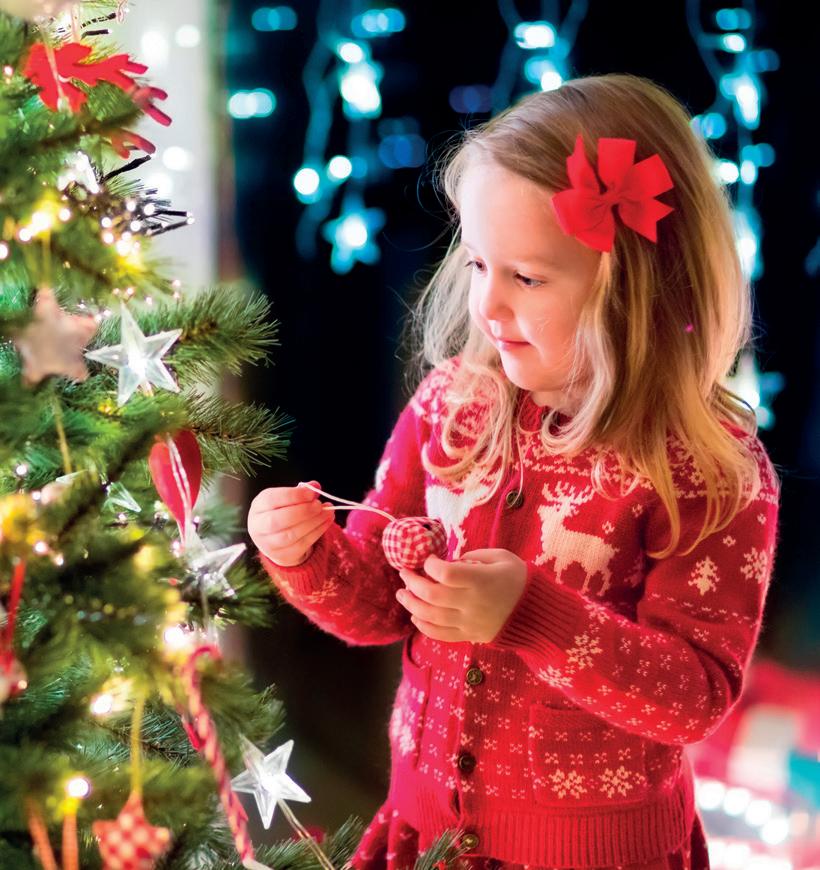
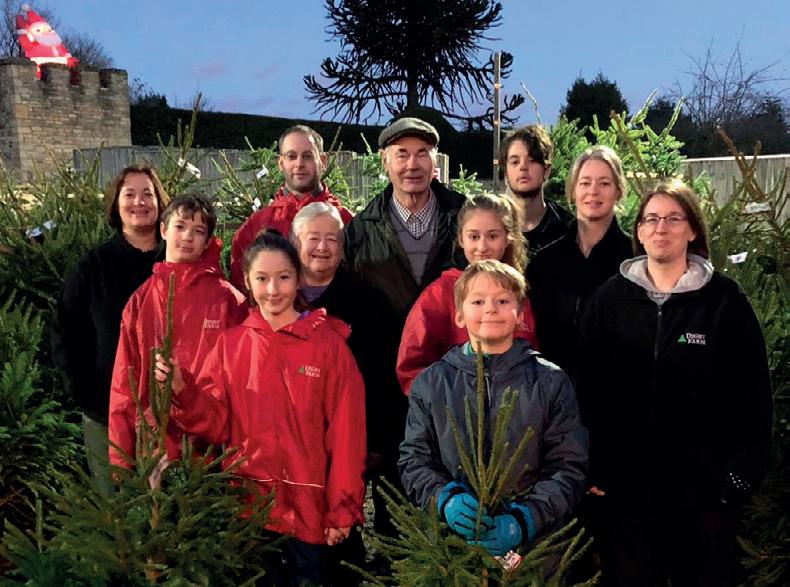
LOOKING AFTER YOUR TREE...
1. Buy a top quality, fresh tree... If you want a Christmas centrepiece that can withstand more than a few weeks in your home, shopping with quality in mind is a priority. When checking the health of a tree you can also try tapping the cut end to the ground, a few falling needles is expected, but if lots fall off without much movement, it’s time to find another!
2. Trim your trunk... You shouldn’t need to do this at all if your tree has been freshly cut, but once you get your tree home, saw half an inch off the trunk. This will rid your tree of any hardened sap and make sure it can absorb lots of water to stay fresh and green throughout your festivities. If you don't have the tools available to do it yourself, ask your friendly local Christmas tree seller!
3. Keep your tree waterered... Water is key to keeping your tree alive throughout the festive season. Make sure you choose a sturdy stand that can hold a good amount of liquid. Your Christmas tree needs to be kept in water at all times, so finding a base with a good well that you can access is important. Check your tree’s water source every day, you'll be surprised just how thirsty they can be, drinking upwards of 2-3 pints a day! Make sure the trunk is nicely submerged for happy and healthy needles.
4. Forget the Gimmicks... You might have been told that Coca-Cola or some other household staple in the base helps to keep your tree alive. Don’t fall for it! Your beautiful tree just wants a constant supply of fresh water, it’s that simple.
5. Not too hot, not too cold... Your tree’s natural habitat at this time of year is out in the cold air; minimise the shock of the relocation. Constant heat or fluctuating temperatures can dry your tree out very quickly and if you're planning to put your tree up very early this year, it’s vital you keep it away from direct heat.
I’M DREAMING OF A GREEN CHRISTMAS
THE HOLLY & THE IVY, AND LOTS OF OTHER FESTIVE FOLIAGE TOO...
THE PLEASURE AND MYTHOLOGY OF IVY
Is it time to rethink the way we view clingy, misunderstood, ivy?

Ivy is often mischaracterised, accused of strangling trees or damaging buildings, a sort of clingy, misunderstood vandal. Research by English Heritage has shown that in some cases, ivy can help preserve stonework on old buildings. In fact, this woody, evergreen, much maligned, supports over 50 species of wildlife and lives symbiotically with other trees. There are two sub-species; Hedera helix and Hedera hibernica. The latter doesn’t climb, but rather spreads across the ground. Mature plants produce flowers from September to November and there are few habitats or conditions in which it doesn’t thrive – sometimes a little too quickly for some gardeners’ preferences. The association of ivy with Christmas celebrations dated back to the Pagans but was adopted by Christians in medieval times. Sharp’s English Folk-Carols (1911) was the first published version of the song The Holly and The Ivy. n
KISSING UNDER THE MISTLETOE
Mistletoe is hemiparasitic, meaning it gains much of its nutrition and water from its host in order to photosynthesise. There are 900 species worldwide, but only European mistletoe (Viscum album) is native to the UK. Mistletoe prefers cultivated apple trees but will also grow on hawthorn, poplar and lime, meaning orchards and churchyards are its most common home. It wasn’t until the 1700s that the tradition of kissing under the mistletoe was established, with a belief that the plant symbolised fertility and romance. n


CHEERFUL RED POINSETTIAS
HELLEBORUS, THE CHRISTMAS ROSE
Poinsettias are a Christmas classic and an obvious choice to have brightening up your home during the festive season. Many are grown locally, at Spalding, for instance, just down the road from Stamford. The reason that poinsettias thrive during Christmas is because they’re tropical plants and so if you’re placing one on a windowsill, make sure it’s not touching the glass, since the cold will damage it almost immediately. Never overwater poinsettias or leave them sitting in water, and make sure their pots have good drainage. n
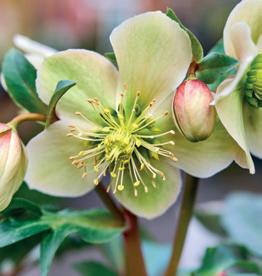
Shakespeare reckoned that a rose by any other name would smell as sweet. Well, The Christmas Rose is in fact a hellebore, also known as a Lenten rose, because they flower from late winter into spring. Hellebores actually belong to the buttercup family. What’s in a name? Very little we reckon! n

BECOME A HOLLY BUDDY...
Lesser known facts about this festive favourite
A festive favourite, holly is a dioecious plant, meaning it has separate male and female plants. Much more common prior to enclosure, the ancient forests of the Midlands were cleared of vast swathes of holly following the 1803 act. Still, mature holly trees can stretch up to 15 metres tall and live for 300 years. Holly is a staple food to over 30 species, including Britain’s five thrush species, which eat holly berries and disperse the seed when excreting digested berries. There are more than 400 varieties of holly – whose Latin name is Ilex – with many different shapes, degrees of prickliness and with variegated varieties too. Bushes grow best in moist well-drained soil, and are tolerant of either sun or shade. Berries are produced on female plants from autumn until mid-winter. Both genders produce white flowers with four petals, but male plants have more prominent stamens, whilst females flowers produce the berries. If you’re planting holly in your garden, be sure to have at least one male plant in close proximity to female plants. Holly leaves and berries reflect the light and add colour to the dark days of Yule, and it’s the red berries’ association with blood and spiky leaves, too, that has led to an association with Christian tradition. In Celtic mythology the Holly King ruled over the half of the year from the summer to the winter solstice. At this time the Oak King defeated the Holly King to rule for the time until the summer solstice. n
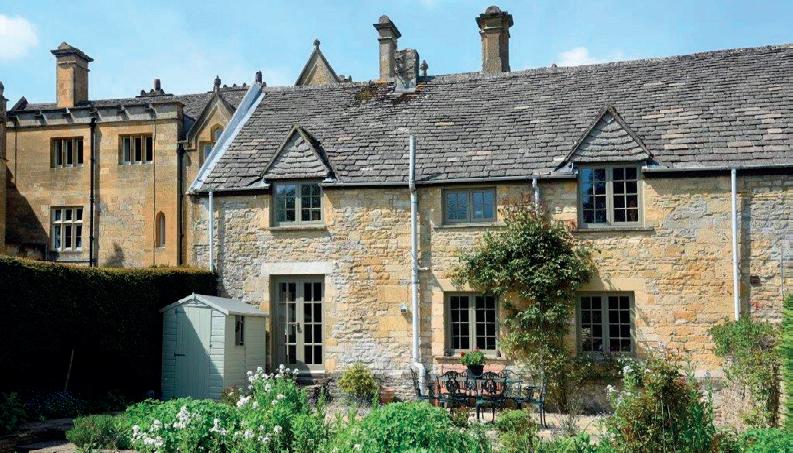
The Zero Carbon Myth
Can we achieve net zero carbon by 2050, given the planning regime and Conservation planning rules? We ask Roy Wakeman OBE, Chairman of The New Window Company
We are led to believe that there are 9m existing homes that require home improvement work that will insulate them from the vagaries of our winter weather and thereby reducing energy consumption as described by all the leading politicians and was a key component of COP 26, and the aim to achieve net zero carbon by 2050.
By our standards some 25 to 30% of these homes come under conservation planning rules as set out by English Heritage and their devolved equivalents in the rest of the UK. Included in the scope of the planning rules and rigidly kept to by most local authorities is the fenestration including windows and doors. The vast majority of these are products made from timber and more than often historic box sash windows.
The condition of most of these are in a bad way and were made in times when the performance of the products to reduce noise, energy consumption and provide security was not a major consideration.
Today modern manufacturing methods and the treatment of the timber component are such that compliance under the building regulations for these key performance standards is a given.
The condition or the existing windows and doors is such that most leak air and water, provide no comfort for thermal efficiency and as a result will not help to reduce energy costs. They are normally single glazed putty lined. The modern window has energy efficient features and can include a slim double-glazed unit 14mm for the heritage market, paint finishes that can be warranted for 12 years and have proven through lifetime cost analysis to have a life expectancy of 65 years. With our supply chain partner Timber Windows.com we provide a collection of specially designed windows and doors that have gained positive feedback and planning approval from planning authorities across the UK. When presented to the home they are an exact replica of the existing products but have a slightly heavier section to carry the performance characteristics so do not detract from the period design the houses are meant to maintain. But approval from the planning authorities does not come readily and homeowners wanting to improve the thermal efficiency, security and sound insulation will find a sensible discussion with the planning authority to explain the features of the products will generally win approval. The end result will provide protection for the maintenance of the Heritage state of the home whilst providing all the benefits of modern performance in Security, thermal and sound insulation. n
Find Out More: Modern Timber Windows made by the UK’s recognised market leader Timber Windows.com are available from: The New Window Company Ltd., and have extensive showrooms with full size displays at Elms Barns, Frieston Heath, Caythorpe Lincolnshire, NG32 3HD. Telephone 01400 272538, www.newwindow.co.uk.










